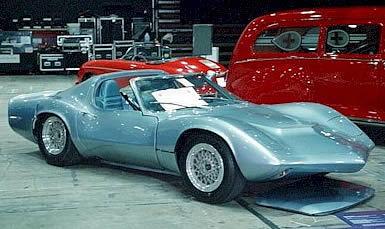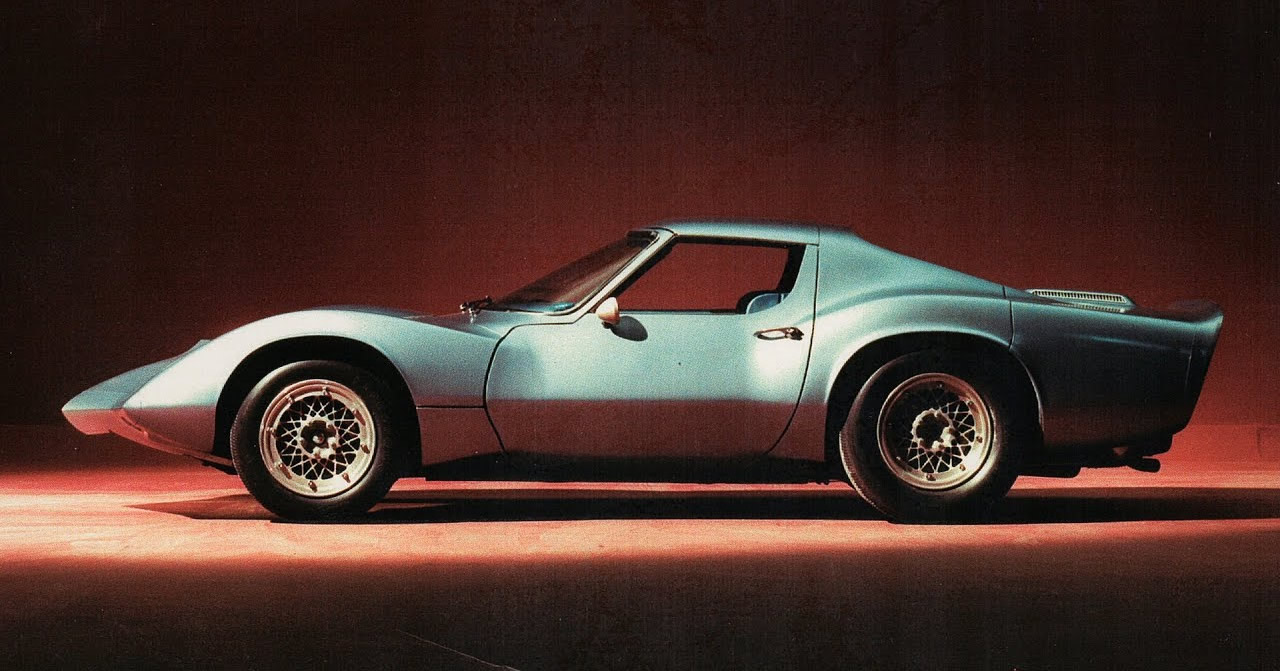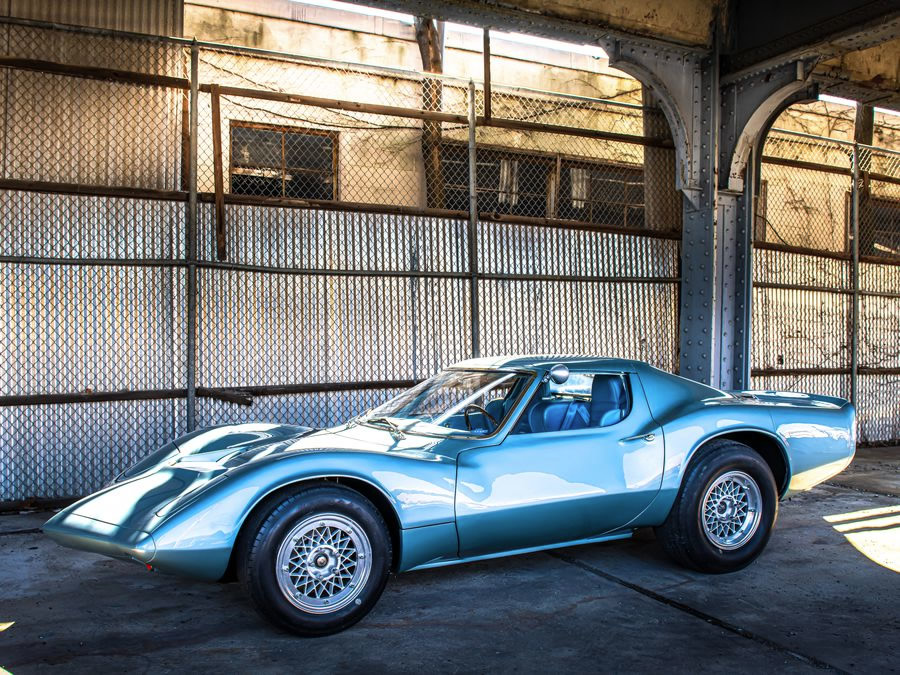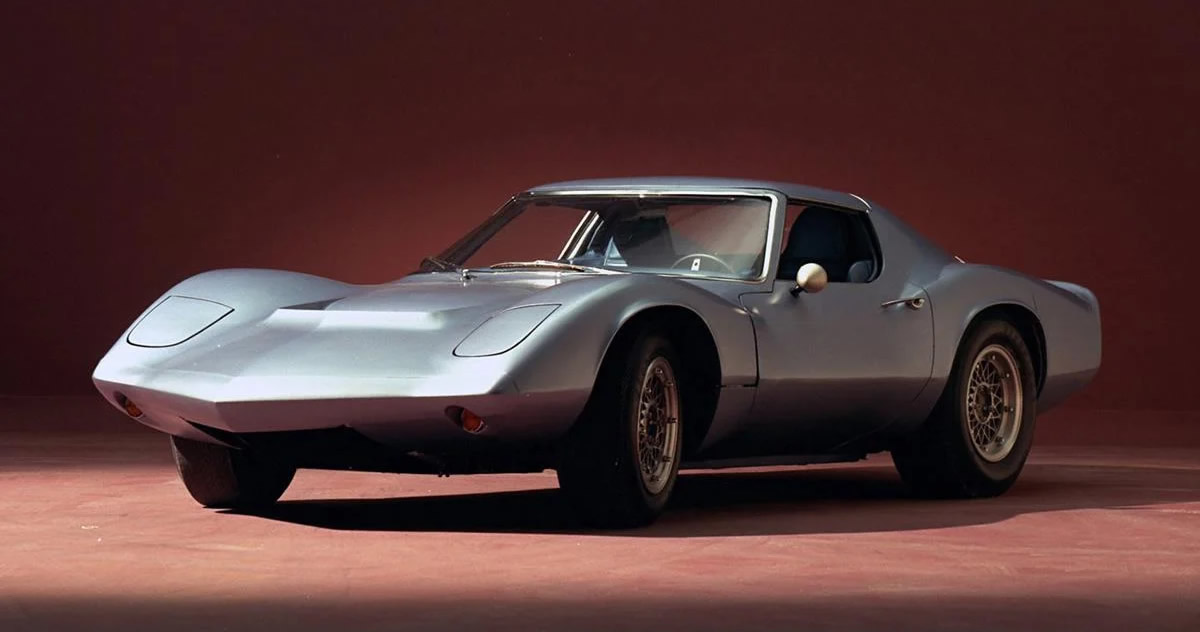1964 XP-819 Corvette: Definitely Not The "Ugly Duckling"
 XP-819 Corvette: Definitely Not The "Ugly Duckling" - Interview with Larry Shinoda
XP-819 Corvette: Definitely Not The "Ugly Duckling" - Interview with Larry Shinoda
© Wayne Ellwood, Shark Quarterly, 1995
Used here with permission by the author
SHARK Quarterly visited with Larry Shinoda in the spring of 1995. Larry's work and opinions covered such a wide range of issues, however, that we had to break them down into their components. I have been asked to encapsulate the best of the discussion on XP-819 together with some of my own research.
First, to understand XP-819, you might want to hear some of Larry's stories about how it came to be built at all. The car was built in an era when GM was seeking out new avenues; they were competing with the foreign manufacturers to capture the sports car image (and sales). Automotive technologies were opening up, both in terms of design and the mechanicals. All the backrooms, regardless of manufacturer, were buzzing with concept cars and approaches totally new to North America. It was in this environment that Zora Arkus Duntov was pushing for a "rear-engined" test bed. He wanted something that came close to the mid-engine approach but did not pose the same packaging problems. It might be unfair to say that Porsche was an inspiration for the boys at GM but let's not rule that out, either. Larry tells a little of the tale:
Shinoda: The car which we now call the XP-819 was developed in 1964. It started when several different groups within GM were given some basic engineering specifications that Zora was working on. Both Zora's group and our own were working on these specifications making entirely different cars.
I want to emphasize that Zora had nothing to do with the XP-819. In fact, it was Zora who started the "ugly duckling" name that seems to have been associated with our design. But really this is all a bit of mis-leading.
Zora had been working on these ideas for rear-engined cars. He had been developing some line drawings on the wall of his shop using the same 90 inch wheel base that we had all been given as the start point. He took the driver with his feet set way up front like in the race cars; he put a 1963 front windshield and front end on it with the nose way up in the air. He then took all the mechanicals, radiator, fan shroud and condenser and hung them out the back. He covered that with a kind of '63 back end and drew a line from the back to the header to encompass everything.
Well, we had been given the same mechanical specification in our studio, but we took the driver and moved him back and low in the car. We took all the crap off the back and put the radiator up front. We were pretty well advanced in our line drawings when Zora asked the executive for a decision on whether to build a car to these specifications.
The meeting was held in Hank Haga's studio and Zora presented his car. He laughed when he presented it and came out with the famous line which is attributed to the XP-819. He said, "Ha, it would be very ugly duckling". The discussion went around the room and everyone had a good shot at it. Irv Rybicki, Director of Design (below Bill Mitchell) said that anyone who could fix that would have to be a #@! genius. Frank Winchell was in charge of Chevy R&D at that time and I had been doing a lot of work with him. When they asked him what he thought, he said he wouldn't comment until he talked with his styling expert.
 |
 |
When he asked me I said, " I think we could make it into a very beautiful car. When do you want to see it?" Rybicki then said, "What do you mean do we want to see it? Do you have it done?". I told him it was almost done. He could see it after lunch! He didn't actually believe me so he asked a lot more questions about whether it was full size and everything. So I said, "Yeh, full size. No sketches. Full size. It's at the warehouse".
Of course it really wasn't quite done yet so I called my guys at the studio and told them not to leave. We had to d quite a bit of work but we got the tape drawing ready before they arrived. They were all quite surprised. Zora got out his yoyo (tape measure) and started to check all the specs. "Where did you cheat?, he asked. But everything was right there. Winchell asked everyone what they thought and they agreed to go ahead and build it. It was done in about three or four weeks.
SHARK: What were some of the major features, from your perspective?
Shinoda: The car had 10 or 11 inch wheels on the rear and I recall that it had 6 inch wheels on the front. You really didn't need any front wheel width, because almost all the weight was on the rear. In this configuration, Larry Nies had it cornering at over 1G on the skid pad, so the detractors who said it was an evil handling car just weren't paying attention. The guy who did this testing did it in both directions, so it wasn't just a fluke. Photos of the time show it with the inside front wheel about four inches off the ground.
The rear weight bias was also written up quite a bit. Paul vanValkenberg wrote some very negative comments about the handling. He actually crashed it but he never says why he crashed it. In reality, he put the same (standard) size Corvette rim on the car front and rear and then wet down the track and went out and lost it. He bounced it off the wall a couple of times and pretty well wrecked it. It was then sent off to Smokey Yunik, where it was later found.
The seat on the car was stationary and the pedals and steering were moved back and forth on a screw-jack operation. The outer half of the seat was built into the door. So when you opened the door you could actually step right down into the gutter. Also, when you closed the door you had to be careful to lift a cheek or get it pinched. The doors were very thick with an extreme tumblehome. And the hinges and door lock plate were tapered to provide a very solid fit and they were joined by a steel beam in the door. Side impact intrusion protection was very good.
I designed the Chapparal-style wheels. It was made so that you could change the rim widths easily. It had an O-ring seal that you could run tubeless tires, which was pretty novel at the time.
SHARK: So, to sum up, the XP-819 shouldn't really be called the "ugly duckling" car?
Shinoda: No, in fact, after the MONZA and the MAKO SHARK, it probably served to develop a lot of the styling cues for your SHARK series. You may even see some of the "Coke bottle" shape in this car and it preceded MAKO SHARK. To me, it is a beautiful car even though it may not have been an engineering marvel.
SHARK: Maybe you could help relate this car to the SHARK series? Are there parts that you feel were obvious carry-overs or influences?
Shinoda: The styling is obviously my favourite aspect. But mostly its the soft front and rear that we developed starting with the XP-819. My favourite of the cars is the 1973. I really like the soft nose. The soft rear on the 1974 doesn't thrill me as much as the earlier rear-end treatments. In fact it reminds me of the J-30 which in turn seems to have been styled after a steaming dog turd.
The XP-819 was not pursued any further after the crash by vanValkenberg. In fact it was sold for scrap with directions that it be cut up. It was found many years later in Smokey Yunick's shop in Daytona Beach (FL). The discovery by Steve Tate, a Chevy dealer out of Gallatin (MO) was published by CORVETTE NEWS (Feb/March, 1979). If I can borrow a bit of their research, it seems that he was collecting one car of every year of Corvette; he had heard about some fuel injection parts that might be for sale at Smokey's place and he went down to check it out. While getting the chef's tour, he spotted the pieces of XP-819 being stored in the paint booth. The car was purchased on the spot, without a clue as to how much the restoration would cost or even if all the parts were there. Steve restored the car with the help of a friend, Delmar Hines, who did the chassis and mechanical re-assembly. Steve's own shop did the body and paint.
SHARK: XP-819 now sits in the National Corvette Museum in Bowling Green (KY). It is "on loan" from Ed McCabe, who runs his own advertising agency in New York. Ed bought the car in 1990 at an estate auction being run by Sothebys in Palm Beach. He was a resident of Miami at that time and had been browsing the auctions looking for investment cars. He knew when he saw it that it was unique but he didn't know much about it. He called a friend who put him in touch with another knowledgeable Corvette guy. Ed learned what he needed to know and went to the auction. As it turned out, both of them bid on the car. Ed's bid went higher but he made a short term deal whereby the other guy would try to market the car. That didn't pan out and a while later Ed was again in control of his own investment.
Ed McCabe is not specifically a Corvette aficionado but he is a "car guy". He was born in the Chicago area and grew up racing all kinds of sports cars both there and later in the New York area. Jaguars, Healeys, Ferraris -- anything he could get his hands on. He claims that he has paid his dues, too. He sold cars for a while in the Chicago area, but not just any car. It was a Skoda dealership. After that he moved to New York and opened an ad agency. His first client was Volvo and that relationship lasted for 20 years. Now if that's not car stuff, what is?
Ed's interest in cars is wide ranging. He has owned all different kinds of sports cars and he currently owns a '59 Bentley Continental, a '46 Ford convertible, a '37 yellow Rolls Royce and XP-819. Ed is an investor and hopes to be able to sell XP-819 some day but he isn't just in it for the money. XP-819 holds a lot of styling appeal for him; as an advertising guy he can "see" the beauty in its lines, even when the total package is not everyone's first choice. He enjoys the "Coke Bottle" hints and he especially likes the Chapparal-style wheels. The height of the car reminds him of previous Ferrari Dino's that he has had; a very light, agile and well-sized car. Meanwhile he is just as happy having it sit in the museum being carefully attended and viewed by the public.
Ed inherited a certain amount of history along with the car. The original GM test logs and factory photos came with it, at the auction. He has also talked with Larry Shinoda to verify some points about the car. For example, there were rumors that the engine was not the original engine; this has been discounted by Larry and by people at Smokey's shop. The car did not come with an aluminum engine; the engine that is in it now is believed by many knowledgeable people, to be the original.
So that's it. That's what I know about XP-819 and how it came into being. There are lots of other "styling" cars out there and we will be covering them all in due course. If you should happen to have any information on one of these cars, don't hesitate to write to me in care of SHARK Quarterly and pass it along.
